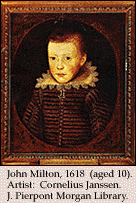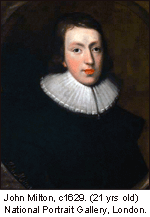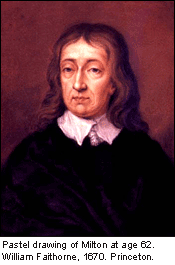About the Name Windsor
The royal family has little use for last names - after all, everyone knows who they are.
Princess Diana did not take back her maiden name, Spencer, after her divorce; she continued to be known simply as "Diana." The Queen signs official documents "Elizabeth R." The R stands for Regina, which means "queen." (Regina is not one of her given names; she was baptised Elizabeth Alexandra Mary.)
But the royal family does have a last name, and they do use it from time to time. This wasn't always the case.
Queen Victoria's husband, Prince Albert, was a member of the House of Saxe-Coburg-Gotha, so her descendants were part of that dynasty. This, however, was not the family's last name. They didn't have one, because they didn't need one, so they didn't worry about it. Experts later worried about it for them and decided their name was probably "Witten" (or maybe even Wipper).
The royal family's official name, or lack thereof, became a problem during World War I, when people began to mutter that Saxe-Coburg-Gotha sounded far too German. King George V and his family needed a new, English-sounding name. After considering everything from Plantagenet to Tudor-Stuart to simply England, the king and his advisors chose the name Windsor.
To this day, the British royal family is known as the House of Windsor. When Princess Elizabeth (the current queen) served as a subaltern in the Auxiliary Territorial Service during World War II, she was called "Elizabeth Windsor." Elizabeth married Prince Philip of Greece, whose family name was Mountbatten, and eventually she decreed that most of her descendants would be called Mountbatten-Windsor. Princess Anne used this name in 1973 when she married Captain Mark Phillips.
However, according to statements made by the queen, it appears that Windsor is still the official family name for any British royal who is styled "Royal Highness." The queen's youngest son, Prince Edward, the Earl of Wessex, has used the name Edward Windsor professionally. His wife, the Countess of Wessex, has been known professionally as Sophie Wessex.
The Order of Succession
The queen has given her approval for Parliament to consider a law that would give royal daughters the right to inherit the throne before their younger brothers. Under current law, Prince Andrew and Prince Edward (and their children) rank ahead of their older sister, Princess Anne, in the line of sucession. If the law changes, Anne will be fourth in line to the throne. Prince Charles, as the queen's eldest child, will remain heir to the throne.
The current order of succession
Prince Charles, the Prince of Wales
Prince William
Prince Harry
Prince Andrew, Duke of York
Princess Beatrice
Princess Eugenie
Prince Edward, Earl of Wessex
James Windsor, Viscount Severn
Lady Louise Windsor
Princess Anne, the Princess Royal
Peter Phillips
Savannah Phillips
Zara Phillips
Catholics and the Act of Settlement
The 1701 Act of Settlement made it illegal for a Roman Catholic, or anyone married to a Roman Catholic, to inherit the throne. (Note: It has been rumored that Prince Charles's second wife, the Duchess of Cornwall, is Catholic, but this is not true.)
Royal Palaces
The royal family uses, but does not own, Buckingham Palace, Kensington Palace, St James's Palace, Hampton Court, Windsor Castle and other residences. Balmoral and Sandringham are the queen's personal property.
The Firm: The Troubled Life of the House of Windsor by Penny Junor. This book promises an in-depth look at how the royal family really operates and how they behave behind closed doors.
The Women of Windsor: Their Power, Privilege & Passions by Catherine Whitney. Examines the lives of Britain's Queen Elizabeth II, the Queen Mother, Princess Margaret, and Princess Anne.
Wives of the Kings of England: From Hanover to Windsor by Mark Hichens. Discusses Queen Alexandra, Queen Mary, the Duchess of Windsor, the Queen Mother, and others.
The British Monarchy for Dummies by Philip Wilkinson. Explains the origins of the monarchy, how it works, what the royals do all day, and more.
Britain's Royal Heritage: An A to Z of the Monarchy by Mark Alexander. Contains more than 2,000 entries on topics such as Maundy Money and the Coronation Ceremony.
On Royalty: A Very Polite Inquiry Into Some Strangely Related Families by Jeremy Paxman. With a mixture of popular history, direct reportage, and funny anecdotes, the author examines how the role of Britain's head of state has changed over the years.
The Decline and Fall of the House of Windsor by Donald Spoto. Excellent introduction to the personalities and events that shaped the Windsor dynasty, from the days of Queen Victoria to the 1990s. Despite the title, the author is not unsympathetic to his subjects. Out of print, but available from Alibris.
Confessions of a Fake Sheik: "The King of the Sting" Reveals All by Mazher Mahmood. A journalist who poses as a wealthy sheikh talks about his encounters with famous people, including royals.
Living Off the State: A Critical Guide to Royal Finance by Jon Temple. A detailed examination of the official finances of the British monarch and leading members of the royal family. Examines the Duchies of Cornwall and Lancaster; the Civil List; housing for leading royals; the Royal Collection; and more.
Marcus Adams: Royal Photographer by Lisa Heighway. Marcus Adams took his first portraits of future Queen Elizabeth II in 1926, and he continued to photograph the royals regularly until 1956. This comprehensive collection of his royal portraits includes many previously unpublished images.
The Royal Scrapbook by Robert Opie. Over 1,000 images illustrating more than 100 years of royal events, beginning with Queen Victoria's Diamond Jubilee and ending with Queen Elizabeth II's Golden Jubilee.
The Queen's Year: A Souvenir Album by David Oakey. A season-by-season guide to the Queen's busy year, illuminating the traditions behind many royal events. Illustrated with new photos.
Magic Moments: The Greatest Royal Photographs of All Time by Arthur Edwards. For thirty years, photographer Edwards has captured memorable royal moments. This book contains his best color pictures and unique stories.
Crowning Glory: The Merits of Monarchy by Charles Neilson-Gattey. Argues that monarchy is a stabilizing force, and explains how the concept of a constitutional monarch emerged and how monarchs since Queen Victoria have played that role.
The End of the House of Windsor: Birth of a British Republic by Stephen Haseler. Is the British monarchy an absurd anachronism or the lynchpin of the nation state? This controversial book argues that, as a result of recent scandals, a British republic is now inevitable.
War of the Windsors: A Century of Unconstitutional Monarchy by Lynn Picknett, Clive Prince, and Stephen Prior. Examines the battle for power in the modern British royal family. Topics include the abdication of Edward VIII, the cover-up of royal financial scandals, and the use of euthanasia on royals.
God Save the Queen? Monarchy and the Truth About the Windsors by Johann Hari. The author says the royal family's members have been broken and destroyed by the institution they were born into.
God Save the Queen: The Spiritual Dimension of Monarchy by Ian Bradley. Explores the spiritual dimension of monarchy in historical and contemporary times, and the debate on the future of the British monarchy. Out of print, but available from Alibris.
Down With the Crown by Antony Taylor. British anti-monarchism and debates about royalty since 1790.
The Monarchy and the Constitution by Vernon Bogdanor. English constitutional history and theory. The author makes a case for the positive role that monarchy plays in modern democratic politics.
King and Country: Monarchy and the Future of King Charles III by Robert Blackburn. Unravels the tangled relationship between crown and state in Great Britain, examining how a monarchy can work in a democracy, the political powers of a British monarch and the nature of the royal prerogative, the case for republicanism, and the future of the monarchy.
The Nature of the Crown: A Legal and Political Analysis edited by Maurice Sunkin and Sebastian Payne. Essays about the monarchy and constitutional law in Great Britain.
The Constitutional History of England by Henry Hallam. From the accession of Henry VII to the death of George II.
The Executive in the Constitution: Structure, Autonomy, and Internal Control by Alan Page and Terence Daintith.
Honours and Rewards in the British Empire and Commonwealth (2 Volume Set) by Anthony N. Pamm.
Symbol and Privilege: The Ritual Context of British Royalty by Ilse Hayden. Customs, rites and ceremonies of British royalty. Out of print, but available from Alibris.
The Princess Royal by John Parker. A 1989 biography of Queen Elizabeth II's only daughter. Out of print, but available from Alibris.
Riding Through My Life by HRH The Princess Royal. Princess Anne's own account of how riding has benefited her life, from her first tiny pony through becoming European Champion in the dangerous sport of Three-Day Eventing, and representing Britain in the Olympic Games. From Alibris.
Anne: Portrait of a Princess by Judith Campbell. About the events, joys, and sorrows of childhood and life at school which formed Princess Anne's strong character. Published in 1970. From Alibris.
Anne and the Princesses Royal by Helen Cathcart. A book about the position of Princess Royal through the ages as well as about Princess Anne. From Alibris.
Zara Phillips: A Revealing Portrait of a World Champion by Brian Hoey. The only daughter of Princess Anne, Zara Phillips is known as a royal rebel. This book looks beyond the public image to reveal the real Zara with anecdotes and quotes from those who know her.
Out of the Shadows: The Richard Johnson Story by Richard Johnson and Alan Lee. Autobiography of Richard Johnson, one of Britain's leading National Hunt jockeys and the former boyfriend of Princess Anne's daughter, Zara Phillips. Available from AbeBooks.
Edward Windsor, Royal Enigma by Wendy Leigh. What is Prince Edward really like? Find out! This biography is out of print, but available from Alibris.
Sophie's Kiss: The True Love Story of Prince Edward and Sophie Rhys-Jones by Garth Gibbs and Sean M. Smith. The little-known details of the romance between Queen Elizabeth's youngest son and the woman he eventually married. Out of print, but available from Alibris.
Edward Wessex's Crown and Country: A Personal Guide to Royal London by Prince Edward. The prince takes the reader on a tour through the history of London's royal palaces. This is the companion book to the PBS series (for which scroll down to the
video section).
Princess Margaret: A Life Unravelled by Tim Heald. A biography based on unprecedented access to the Royal Archives and those closest to Princess Margaret, including her ex-husband, Lord Snowdon, and her son, Lord Linley.
Margaret: The Last Real Princess by Noel Botham. Biography of Queen Elizabeth II's unconventional younger sister.
Princess Margaret: A Life of Contrasts by Christopher Warwick. Authorized biography. Available from Alibris.

 Love can occur between two or more individuals. It bonds them and connects them in a unified link of trust, intimacy and interdependence. It enhances the relationship and comforts the soul. Love should be experienced and not just felt. The depth of love can not be measured. Look at the relationship between a mother and a child. The mother loves the child unconditionally and it can not be measured at all. A different dimension can be attained between any relationships with the magic of love. Love can be created. You just need to focus on the goodness of the other person. If this can be done easily, then you can also love easily. And remember we all have some positive aspect in us, no matter how bad our deeds maybe. And as God said �Love all�
Love can occur between two or more individuals. It bonds them and connects them in a unified link of trust, intimacy and interdependence. It enhances the relationship and comforts the soul. Love should be experienced and not just felt. The depth of love can not be measured. Look at the relationship between a mother and a child. The mother loves the child unconditionally and it can not be measured at all. A different dimension can be attained between any relationships with the magic of love. Love can be created. You just need to focus on the goodness of the other person. If this can be done easily, then you can also love easily. And remember we all have some positive aspect in us, no matter how bad our deeds maybe. And as God said �Love all� 




 Five years later, in 1994, Prince of Persia 2: The Shadow and the Flame was released with better graphics and a larger environment filled with all sorts of nasty contraptions and a whole new dynamic with the protagonist's shadow.
Five years later, in 1994, Prince of Persia 2: The Shadow and the Flame was released with better graphics and a larger environment filled with all sorts of nasty contraptions and a whole new dynamic with the protagonist's shadow.


 You can make OJ with a simple hand juicer, an electric citrus juicer, a fancy Solis centrifuge juicer, the Mercedes amongst the home juicers the Green Star Juicer or a professional Orange Juice Machine. The price ranges from 4$ to 1000$! For everybody there's a right juicer and making orange juice is as easy as a pie.
You can make OJ with a simple hand juicer, an electric citrus juicer, a fancy Solis centrifuge juicer, the Mercedes amongst the home juicers the Green Star Juicer or a professional Orange Juice Machine. The price ranges from 4$ to 1000$! For everybody there's a right juicer and making orange juice is as easy as a pie.  Whether you're starting a raw food diet - or choose to eat cooked food for now, a fresh glass of OJ can be made and found almost anywhere. It's a raw drink full of enzymes and vitamins. A delicious, easy and healthy start of the day!
Whether you're starting a raw food diet - or choose to eat cooked food for now, a fresh glass of OJ can be made and found almost anywhere. It's a raw drink full of enzymes and vitamins. A delicious, easy and healthy start of the day!